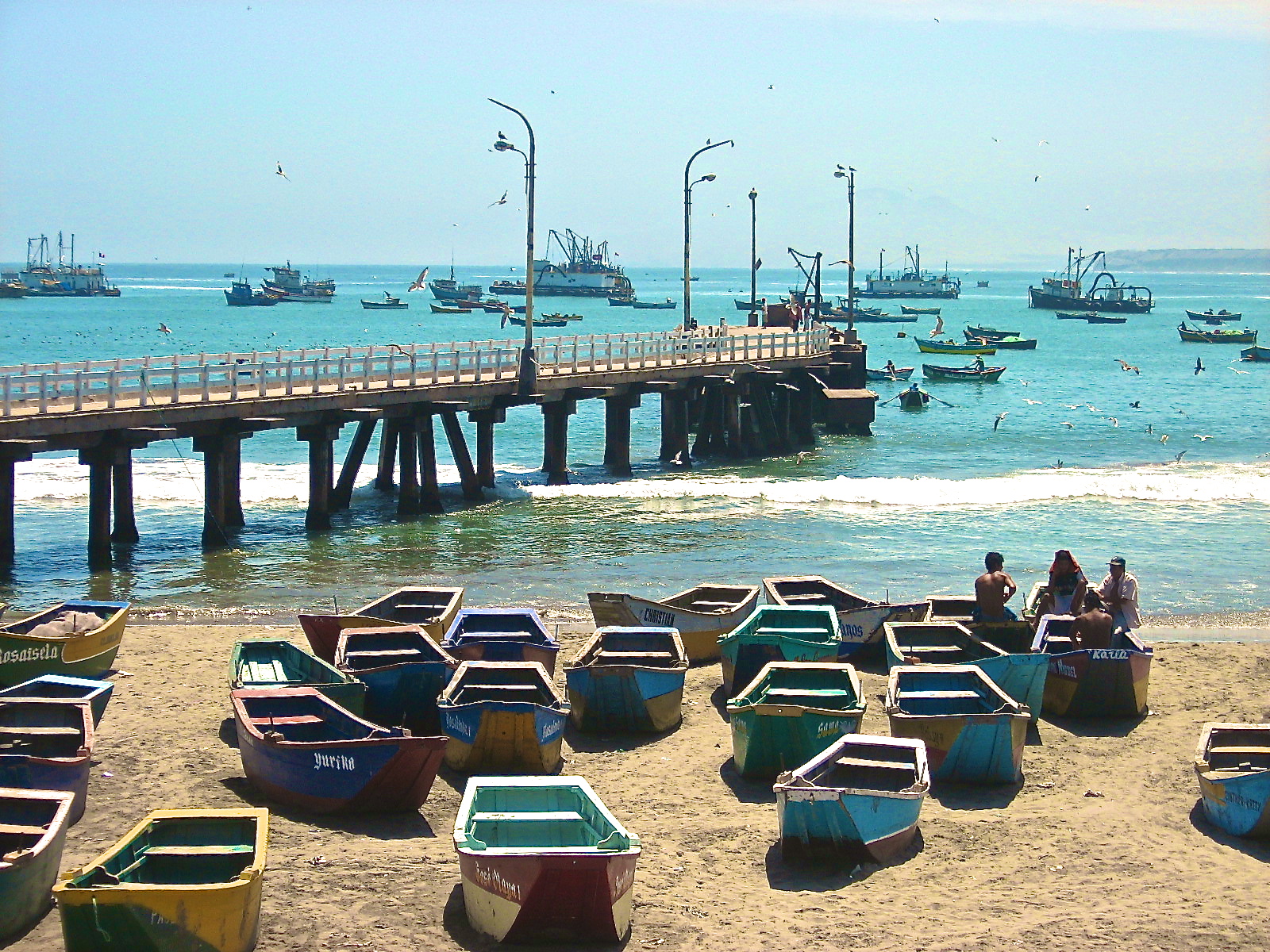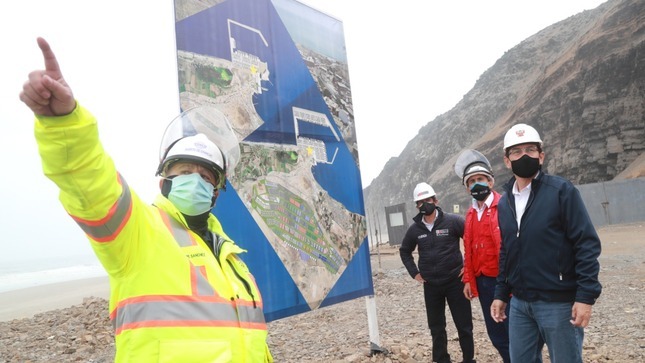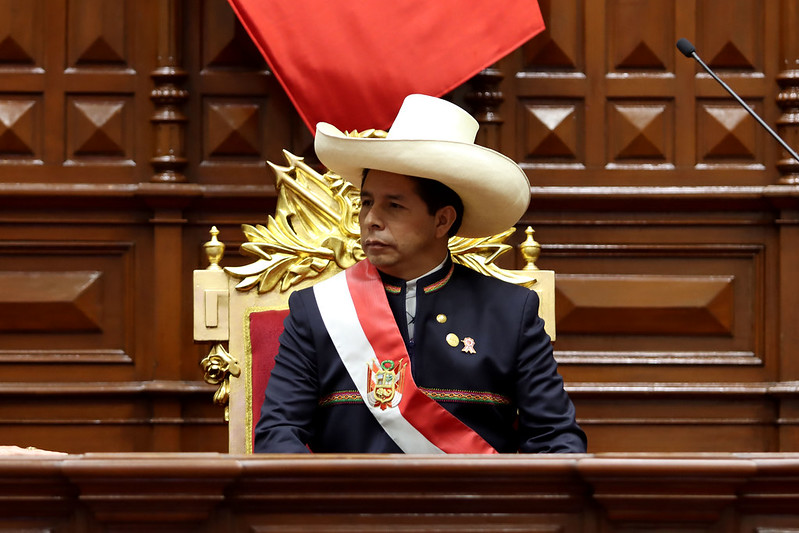
The site of the Chancay Port before China’s megaport project; Chancay is a small fishing hamlet north of Lima, Peru.
“We are convinced that the port will become a strong driver for Peru’s economic development and a model for economic and commercial cooperation.”
China has long held a special interest in Peru, both for its critical mineral endowments and its position in the Pacific. Peru was the first Latin American country to sign a free trade agreement with China and is one of the largest destinations for Chinese investment in Latin America.[i] To further cement its influence and commercial ties, China is constructing a megaport at Chancay, one of its largest and most comprehensive in the Americas, to increase its access to critical minerals and the bountiful harvest of soy, wheat, and other agricultural products from Latin America.[ii] State-owned Cosco Shipping will own and operate the port, giving China outsized control over port operations.[iii]
According to the first excerpted article from the digital outlet Energiminas, once operational, the Chancay port will shorten the main route to Asia by 10 days. The second article from the Peruvian outlet Gestión, notes that Xi Jinping will inaugurate the port later this year at the Asia-Pacific Economic Cooperation (APEC) Summit and that the Chinese delegation promises to include 750 Chinese investors visiting alongside President Xi. The outlet conveys Peru’s hope that Chancay will catalyze further Chinese investments in sectors such as telecommunications and electric vehicles. Earlier in the summer, China hosted Peruvian President Dina Boluarte for a state visit, where, according to the Gestión Chinese President Xi Jinping pledged support for elevating relations with Peru to a Comprehensive Strategic Partnership.
The strategic implications of the Chancay megaport’s inauguration as Peru hosts the APEC Summit this year are significant. Most importantly, these actions demonstrate China’s march to gain influence in Latin America, where it already maintains several dozen agreements to own, operate, or upgrade port facilities. More importantly, many of these ports are deep water and feature docks with wide berths sufficient for the People’s Liberation Army Navy to make port calls for refueling and logistics.
Sources:
“Cosco Shipping espera inaugurar megapuerto de Chancay en noviembre (Cosco Shipping expects to open Chancay megaport in November),” Energiminas (a digital platform focused on energy and mining), 27 June 2024. https://energiminas.com/2024/06/27/cosco-shipping-espera-inaugurar-megapuerto-de-chancay-en-noviembre/
The president emphasized that the Chancay megaport will be inaugurated in November, with the presence of the President of the People’s Republic of China, Xi Jinping. She (Xi) indicated that, to strengthen this work, the implementation of the Ancón industrial zone is planned near the port. ‘Hopefully, an electric vehicle assembly plant can be installed there, it is in the interest of both Peru and China to take care of the environment. In our country we also have copper and lithium,’ she (Xi) said…For his part, Wan Min, president of Cosco Shipping, said…‘We are convinced that the port will become a strong driver for Peru’s economic development and a model for economic and commercial cooperation. Once its construction is completed, Chancay will become the most modern and intelligent port in South America.’
“Perú buscará capitalizar la llegada de inversores chinos y coreanos en la APEC 2024 (Peru will seek to capitalize on the arrival of Chinese and Korean investors at APEC 2024),” Gestión (a Peruvian daily focused on business and economics), 15 August 2024. https://gestion.pe/economia/apec-2024-peru-busca-capitalizar-la-llegada-de-empresarios-chinos-y-coreanos-al-foro-de-cooperacion-economica-asia-pacifico-voices-of-the-future-noticia/
The upcoming APEC Economic Leaders week, which will take place in November in Peru, will not only bring together heads of state and senior officials from the 21 member economies of the Asia-Pacific Economic Cooperation Forum. The arrival of a significant delegation of businessmen is also anticipated, with the participation of up to 750 investors from China…It should be noted that Peru has, to date, trade agreements with 14 of the 21 economies that are members of the Asia Pacific Economic Cooperation.
Notes:
[i] For more information on investment flows from China to Latin America, see: Inter-American Dialogue, “China-Latin America Finance Databases,” accessed 13 October 2024. https://www.thedialogue.org/map_list/
[ii] For additional coverage of the various phases of Chancay’s development, see: Ryan Berg, “China Nears Completion of Large Port in Peru with Dual-use Capabilities,” OE Watch, 01-2024. https://fmso.tradoc.army.mil/2024/china-nears-completion-of-large-port-in-peru-with-dual-use-capabilities/
[iii] For more information on the state of Chancay and the concerns about this megaport project, see: Henry Ziemer, “The Geopolitics of Port Security in the Americas,” Center for Strategic and International Studies, 23 September 2024. https://www.csis.org/analysis/geopolitics-port-security-americas
Image Information:
Image: The site of the Chancay Port before China’s megaport project; Chancay is a small fishing hamlet north of Lima, Peru.
Source: https://www.flickr.com/photos/marirc19/8284806040.
Attribution: CC BY-NA-SA 2.0


